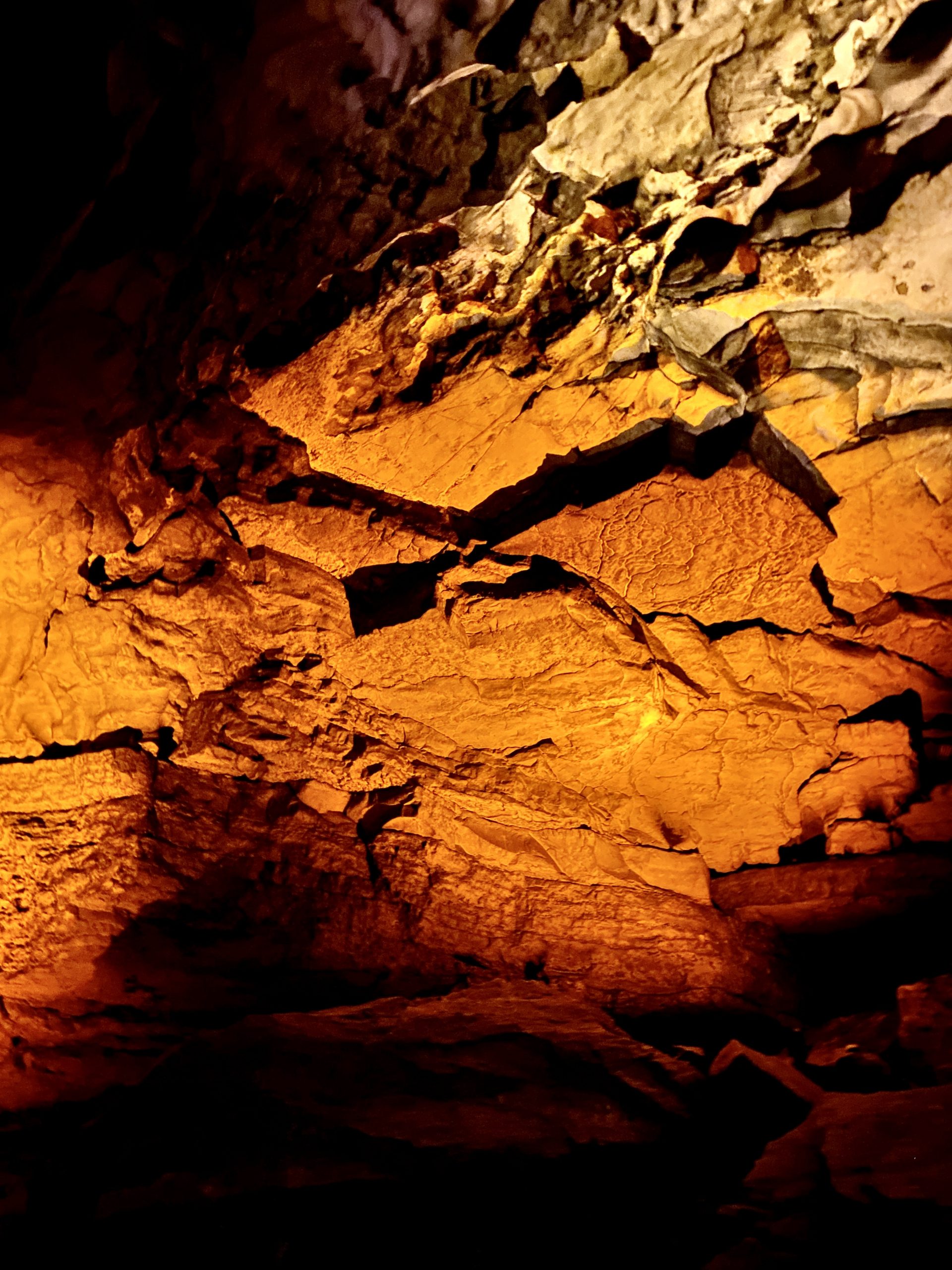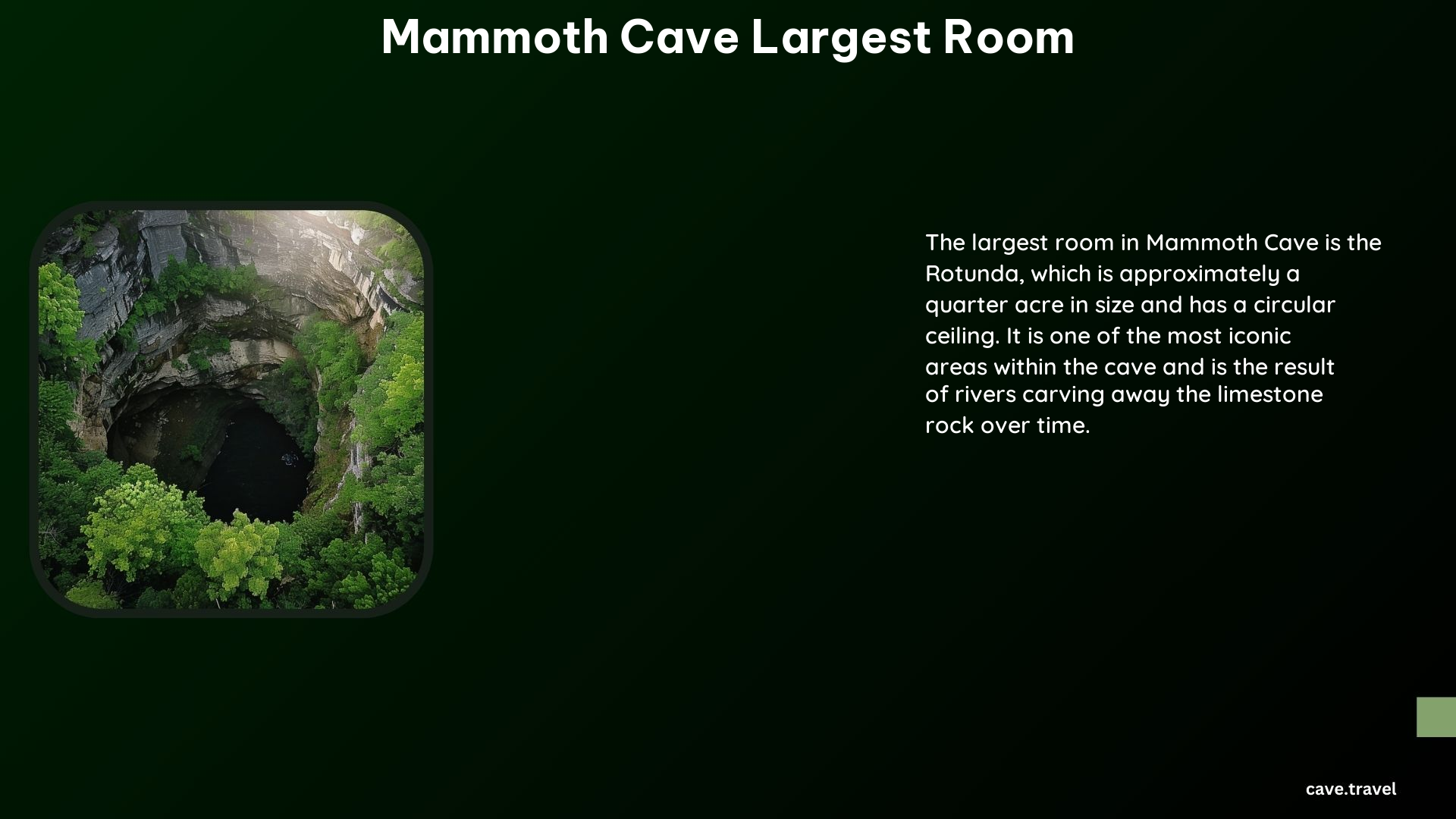The Mammoth Cave Largest Room, known as the Rotunda, is a truly awe-inspiring natural wonder. Situated 140 feet below the surface, this massive, circular chamber is approximately a quarter of an acre in size, making it one of the most impressive and iconic areas within the Mammoth Cave system.
The Rotunda: A Geological Masterpiece

The Rotunda is the result of centuries of erosion, as rivers once flowed through the passages, carving away the limestone rock and creating a natural breakout dome. The room features a circular ceiling, with large slabs of limestone forming the breakout dome, a testament to the incredible power of water and the relentless forces of nature.
Dimensions and Scale
The Rotunda is a truly massive space, with the following key dimensions:
- Diameter: Approximately 250 feet
- Height: Approximately 175 feet
- Area: Approximately a quarter of an acre
These impressive measurements give visitors a sense of the sheer scale and grandeur of this natural wonder, making it a must-see destination for any cave enthusiast.
Geological Formation
The Rotunda’s formation is the result of a complex geological process that has unfolded over thousands of years. As the rivers carved through the limestone, they created a natural breakout dome, which is a type of cave formation that occurs when the ceiling of a cave collapses, leaving behind a large, open space.
The limestone slabs that form the ceiling of the Rotunda are a testament to the power of this process, as they have been sculpted and shaped by the relentless flow of water over time.
The Industrial Past of the Rotunda

The Rotunda has not only a fascinating geological history but also a rich industrial past. During the early 19th century, the Rotunda was used for the production of saltpeter, a key ingredient in the manufacture of gunpowder.
Saltpeter Leaching Vats
In the center of the Rotunda, visitors can still see the remnants of the saltpeter leaching vats that were used during this industrial period. These vats were used to extract the saltpeter from the cave’s soil, which was then processed and used in the production of gunpowder.
The presence of these vats serves as a reminder of the Rotunda’s industrial past and the important role that Mammoth Cave played in the nation’s history.
Exploring the Rotunda
Visiting the Rotunda is a truly unforgettable experience for any cave enthusiast. The sheer scale and grandeur of the space are simply breathtaking, and the opportunity to see the remnants of the saltpeter leaching vats adds an extra layer of historical interest.
Guided Tours
The Rotunda is accessible to visitors through guided tours of Mammoth Cave National Park. These tours provide visitors with the opportunity to learn more about the geological and historical significance of the Rotunda, as well as the broader Mammoth Cave system.
Lighting and Acoustics
The Rotunda is illuminated by a series of strategically placed lights, which help to highlight the room’s impressive features and create a truly awe-inspiring atmosphere. The room’s acoustics are also noteworthy, with the high ceiling and circular shape creating a unique and resonant sound environment.
Accessibility
The Rotunda is accessible to visitors of all ages and abilities, with a well-maintained trail leading to the entrance of the cave. However, it’s important to note that the Rotunda is located 140 feet below the surface, so visitors should be prepared for a moderate hike and some stair climbing.
Conclusion
The Mammoth Cave Largest Room, known as the Rotunda, is a true natural wonder that has captivated visitors for centuries. With its impressive dimensions, fascinating geological history, and rich industrial past, the Rotunda is a must-see destination for any cave enthusiast. Whether you’re a seasoned explorer or a first-time visitor, the Rotunda is sure to leave a lasting impression and inspire a deeper appreciation for the incredible power and beauty of the natural world.
